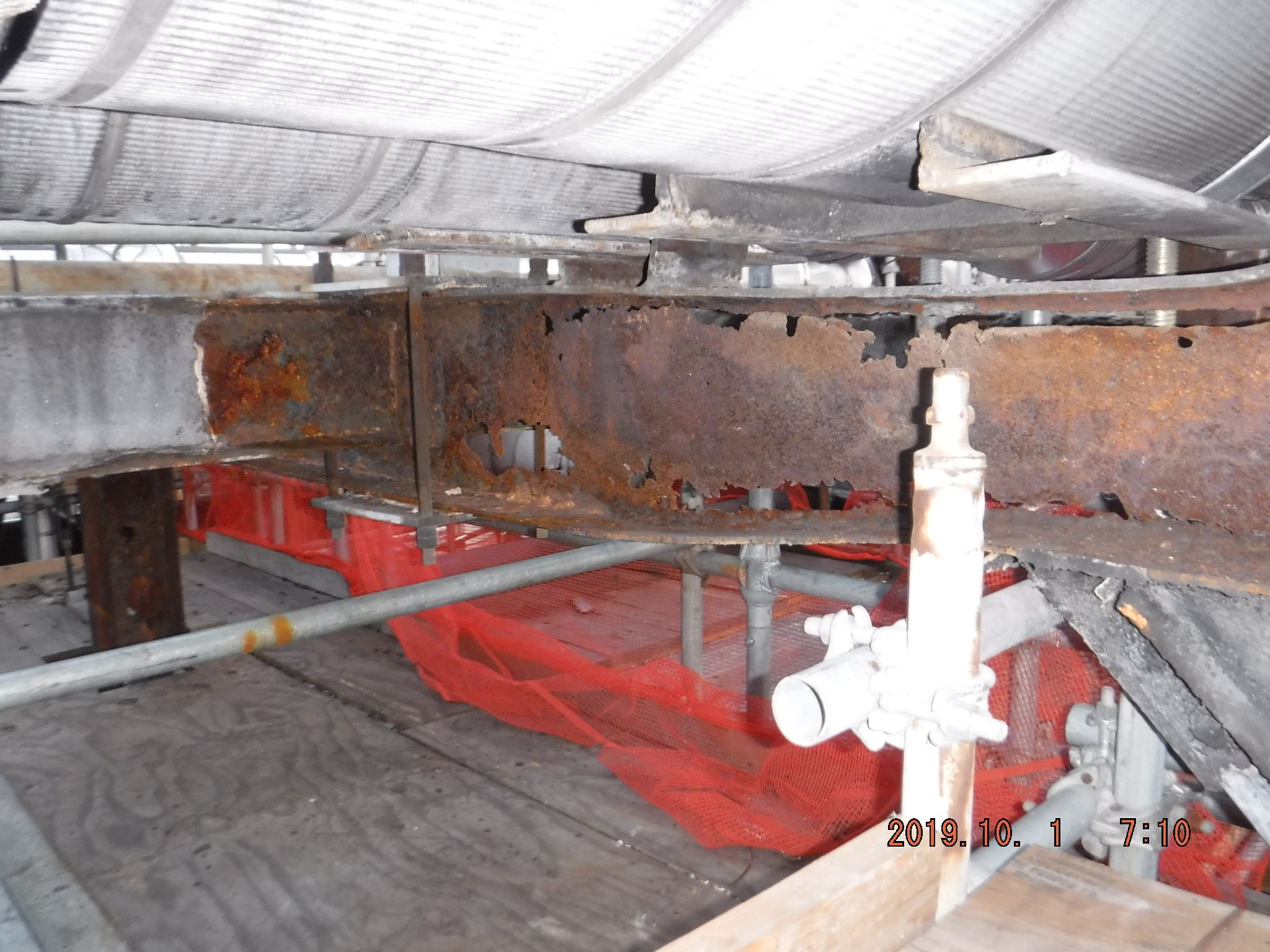Over the years, numerous themes have clearly emerged when talking to clients about Structural & Fireproofing programs. This series will cover the top 3 themes.
Theme 1: How do I determine the condition our structures are in? What is the risk?
Field evaluations should be conducted on a regularly occurring schedule. Just as a facility takes thickness measurements routinely on piping and pressure vessels, the supporting structures should be evaluated for safety and performance. These evaluations should be performed by a firm with proven knowledge of structural framing systems and trained in the inspection of structural and miscellaneous steel, reinforced concrete, and fireproofing systems (cementitious and non-cementitious).
Structure Evaluations
When conducting field evaluations, keep an eye out for the following: for structural steel, look for corrosion, deformation, cracked welds, and missing bolts; for miscellaneous steel (grating, checker plate, handrail, etc.), look for the same conditions as well as general fit-up of flooring systems and the presence and condition of safety systems such as hand-rail, toe-plate, safety gates, etc.; for reinforced concrete structures look for cracking, delamination and spalling. In more in-depth evaluations, it’s imperative to investigate concrete composition, strength, chloride content, and carbonation. Fireproofing evaluations are material-dependent but involves looking for cracking, spalling, staining, and bulging of the fireproofing, which also provides indications of the condition of the underlying steel.
The key to these evaluations is that they are performed by qualified personnel who understand structural framing systems, the differences between the types and patterns of the defects found and what they mean in terms of severity and likelihood of a failure. Without the proper training and experience, one simply achieves a list of defects without any understanding of the risk associated with those defects, whether they must be addressed or not, or the priority in which they should be addressed. For example, it doesn’t take much training or skill to spot a crack in a reinforced concrete or fireproofed steel beam, but to understand the type and size of crack as well as its location and orientation, tells us why the crack occurred, how severe it is, what impact it has on the capacity of the structure and what, if anything, needs to be done about it.
Risk Assessment
Regarding risk, it is not feasible to eliminate it completely. The question is – How do we define an acceptable level of risk and provide a rational basis for that assessment from which sound decisions can be made? This becomes challenging when considering the item being assessed is in service and in a continual state of degradation and repair.
Brindley Engineering’s Field Evaluation teams are led by experienced Structural Engineers, who are trained in field evaluation techniques of structural and fireproofing systems. Our teams come with considerable experience, training, and certifications from ACI, ICRI, AWS, and NACE. The Brindley Engineering risk team utilizes proprietary analysis and modelling techniques to clarify various risk levels then assists the Owner in determining what their preferred level(s) of risk are. We then develop implementation plans and budgets to achieve these goals and implement the programs. Based on our strong work ethic, considerable experience, and innovative proprietary systems, we can quickly and cost effectively evaluate your structures, assess the risk, and develop plans to fit your goals and budgetary constraints.


- Click here to read Part 2 of How to Cut Through the Smoke
- Click here to read Part 3 of How to Cut Through the Smoke


0 Comments